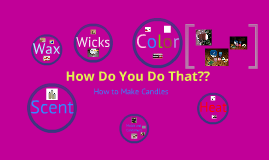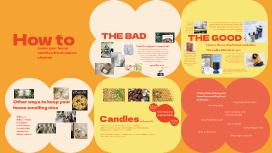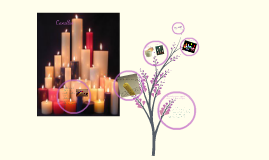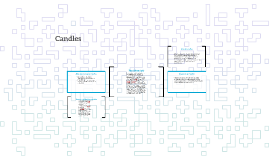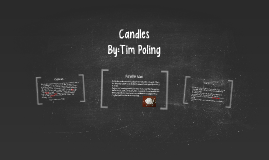candles
Transcript: Air purifiers can help eliminate the microbes that cause allergies, asthma, and other respiratory complications. HEPA filters have an inbuilt capacity to filter over 99.9% of allergens. Buying the best carbon filter on the market can also help you eliminate odors and airborne chemicals. If you have just cooked up a smelly storm simply simmer some vinegar on the stove and it will remove the odors before you finish your last bite. Headaches This goes for your pets too! Cancer THE BAD Kidney Damage 7 Potential Health Issues Caused By Chemicals Found in VOCs THE GOOD Birth Defects How to Bone Marrow Damage Respiratory Issues Nausea Cleanse the air of pollutants and odors Volatile Organic Compounds Then add a little bit of spice make your home smell so fresh and so cleannn VOCs are emitted as gases from certain solids or liquids. VOCs include a variety of chemicals, some of which may have short- and long-term adverse health effects. Concentrations of many VOCs are consistently higher indoors (up to ten times higher) than outdoors. You should change your home's AC air filter once a month. The filter pulls pollutants like dust, pollen, dirt, mold, animal fur, bacteria and more. Over time, germs and grime will clog the filter. If you change it often, you keep the air in your home cleaner and reduce the risk of health concerns for your family. Use baking soda to deoderize your fridge, cabinets, garbage cans, etc. You can also use it to clean your couches, rugs, carpets, and garbage disposals paraffin wax Are wax melts toxic? Like candles, wax melts may be considered toxic or non-toxic depending on their wax base and additional ingredients. For instance, while paraffin wax is known to contain cancer-causing chemicals, vegetable waxes (think soy and coconut) and beeswax are sustainable, naturally sourced options considered safe for your health. -distilled from patroleum, a by-product of gasoline production -burning paraffin wax releases toxins in the air such as carcinogenic benzene and toluene. -Benzene is derived from natural gas & crude oil that is used as a solvent. -Toluene is emitted from gasoline fumes, vehicle exhausts, and cigarette smoke. Toluene is used as a solvent to make paint products, nail polish, lacquers, glue, and adhesives. A good dehumidifier can help remove excess moisture from the air and reduce the ability for mold and bacteria to grow, improving your home's overall air quality. yes Things that can keep your home from smelling fresh & cleannn lingering food smells Other ways to keep your home smelling nice laundry piles Avoid burning a candle for more than 2 hrs at a time high humidity and moisture levels Don't forget to read the label! Candles accumulating trash and wax melts Never leave an open flame unattended furry friends Diffusers Diffuser Sticks Live plants Fresh Flowers Essential Oils Simmer Pot Baked cookies! funky fridge finds Clean candles will be clearly and proudly labeled Look for... 100% soy wax, 100% Coconut wax, 100% beeswax Blends are only clean if clearly labeled Even with clean candles, it's important to make sure there is proper air circulation... so open a window! dirty appliances dirty rugs/ carpets






